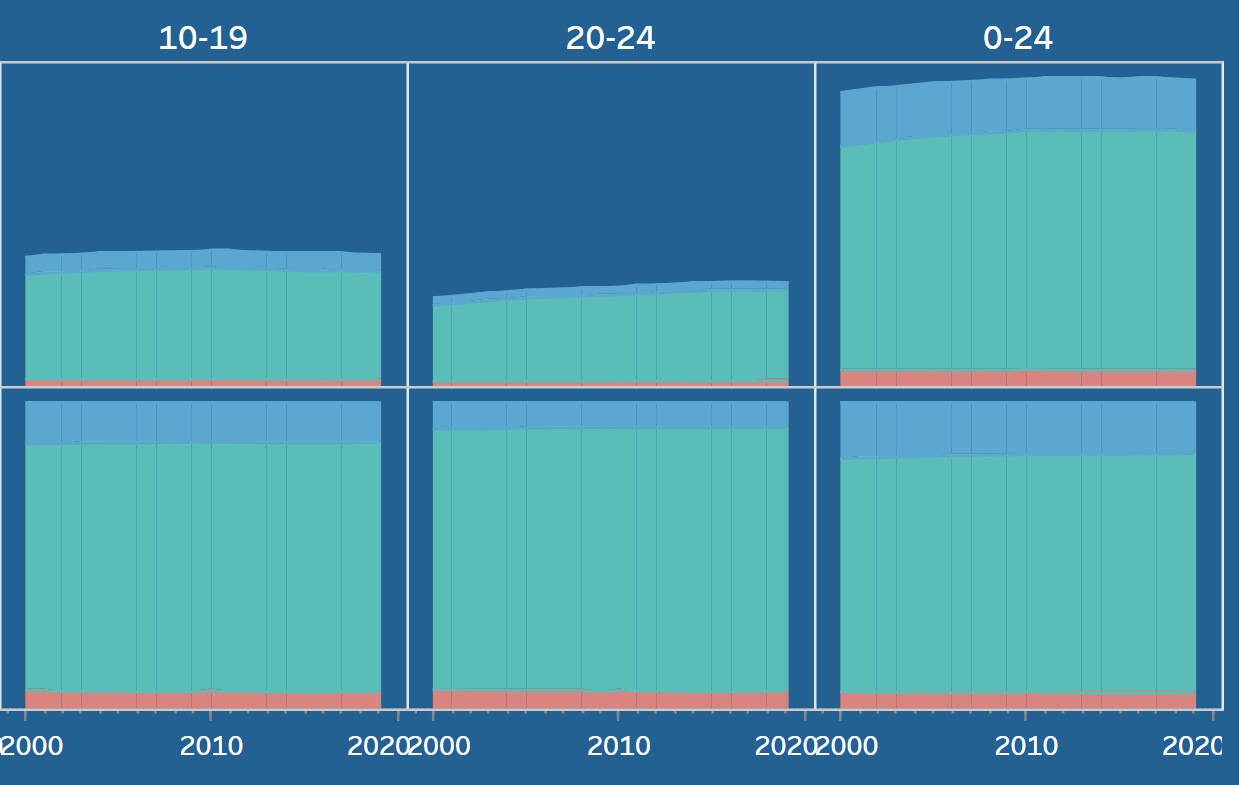Through interactive data visualizations, the portal makes it easier for users to explore data, discover information and share insights to support the efforts to reduce noncommunicable diseases, injuries, and mental health burden and improve the health and well-being of people in the Region of the Americas.
A new analysis of the burden of noncommunicable diseases (NCDs) shows that NCDs account for 30% of all deaths in children, adolescents, and young adults in the Region of the Americas, and many NCD risk factors are increasing.
Congenital anomalies, drug use disorders, leukemia, brain and nervous system cancer, and kidney disease are the top five causes of mortality in boys and girls up to 24 years of age.
Noncommunicable diseases predominate among the leading causes of death and disability in the Region of the Americas
Explore and learn more about the patterns of underlying causes impacting mortality and disability by age, sex, subregion and country in the Region of the Americas from 2000 to 2019 using this visualization.
More efforts are needed in the Region of the Americas to reach the premature NCD mortality target
The probability of dying from NCDs has decreased from 2000 to 2019, however, according to the projection to the year 2030, the Region of the Americas is not on track to reach the SDG 3.4 target (a 33% reduction to be reached by 2030, relative to the probability of dying in 2015). Premature NCD mortality visualization.
BURDEN OF DISEASES, INJURIES, AND RISK FACTORS
This section presents information on mortality and burden of noncommunicable diseases (NCDs), mental and substance use disorders, violence, and injuries. It also includes prevalences and measures of risk factors for NCDs. Through interactive data visualizations, readers can explore the level and trends by disease, age, sex, location, and year. Readers can also download the data for further analyses.
MONITORING THE IMPLEMENTATION OF PUBLIC POLICIES, STRATEGIES, AND PLANS
This section includes interactive tools for monitoring the progress of indicators of plans of actions, strategies, and public policies aimed to reduce the burden of NCDs, mental conditions, injuries, and exposition to the major risk factors for NCDs.
POPULATION-BASED SURVEYS
Population-based surveys are essential sources of information for the prevention and control of NCDs. This section presents results from population-based surveys for measuring the prevalence of risk factors for NCDs (i.e., physical, behavioral, and metabolic), injuries, and mental illness.




















































